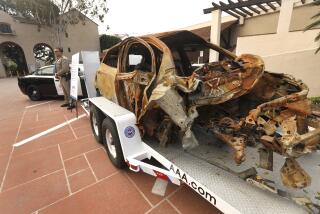CDC says 4.2% of drivers admit to falling asleep at the wheel
Start your engines … and your coffee makers?
A report released Thursday by the Centers for Disease Control and Prevention said 4.2% of adults admitted to falling asleep at the wheel at least once in the previous month.
The report also found that people were more likely to fall asleep while driving if they slept six hours or less a night, fell asleep throughout the day or snored at night.
The CDC’s findings were based on a 2009-10 survey of more than 147,000 people. California had the third-highest rate of drivers falling asleep in the survey, which included 19 states and the District of Columbia. Texas had the highest rate and Oregon the lowest.
Anne G. Wheaton, an epidemiologist and the lead author of the CDC report, said factors such as long commutes and a higher percentage of shift workers can increase a state’s rate of sleeping drivers.
Although the national average of 4.2% is already a high rate of occurrence, the actual number of drivers falling asleep at the wheel is higher, Wheaton said.
“This percentage we reported is people that actually recognize that they had fallen asleep while driving,” she said. “A lot of people, if they fall asleep for a second or two, don’t even realize it.”
Sleep-deprivation impairs drivers by slowing their reaction time, making them less attentive and inhibiting their decision-making ability, Wheaton said.
Crashes related to drowsiness are more likely to happen during the midafternoon and at night, when drivers are the most tired, the CDC reported. These accidents often involve a single vehicle that leaves the road.
But the agency also said that head-on collisions and rear-end collisions were disproportionately caused by tired drivers. Such crashes were also more likely to cause injuries and fatalities than incidents not involving sleepy drivers.
Wheaton and her team found that adults 25 to 34 were the most likely to fall asleep while driving. But older folks, 65 and older, were least likely to snooze at the wheel.
The report also found that men were more likely than women to fall asleep while driving.
Although the National Highway Traffic Safety Administration said it has found that only 2.5% of fatal crashes involve drowsy driving, the CDC said some studies show that number could be as high as 15% to 33%.
The CDC’s report is based on the largest U.S. survey to date regarding sleep deprivation and driving. In a December study by the AAA, 30% of drivers said they had driven in the last month despite struggling to keep their eyes open.
david.undercoffler@latimes.com







